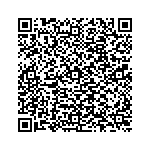3 Trauma Informed Classroom Management with Betsy de Thierry
Betsy de Thierry

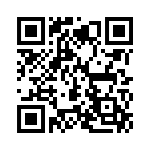 Betsy de Thierry is the founding director of the Trauma Recovery Centre, a charity offering therapy and alternative education to children and young people impacted by trauma. Betsy is a psychotherapist with over 20 years of experience working with vulnerable children, young people and adults. She is also a trained primary school teacher. The combination of education and psychotherapy has led her to provide expertise in trauma support for children and families.
Betsy de Thierry is the founding director of the Trauma Recovery Centre, a charity offering therapy and alternative education to children and young people impacted by trauma. Betsy is a psychotherapist with over 20 years of experience working with vulnerable children, young people and adults. She is also a trained primary school teacher. The combination of education and psychotherapy has led her to provide expertise in trauma support for children and families.
Betsy has authored seven books, including Teaching the Child on the Trauma Continuum and The Simple Guide to Child Trauma: What it is and How to Help. Her books are written mainly for teachers and caring adults supporting traumatised children, providing complex information in an easy-to-read and understandable format.
Click or scan the QR code to learn more about Ms. de Thierry’s work.
Ms. de Thierry: When I completed my university training, you couldn’t just be an educational psychologist. You had to complete five years in education first, which led me to teaching. Teaching was the best way for me to be with kids, help kids and get to know kids. I loved being a classroom teacher. I’d always try to work out how to help the kids that are troubled, misunderstood and not flourishing.
The Trauma Continuum
Dr. Ayre: In your book, Teaching the child on the trauma continuum, you write about the importance of thinking about trauma in terms of a continuum. Why is this important?
Ms. de Thierry: I think the continuum is vital. I sit in many conversations where teachers tell me that all their children are traumatised. How can I be pointing at one in particular? When speaking to educators, I often draw a line and say, ‘let’s look at the difference in terms of trauma symptoms, trauma experience and the child’s environment’. For example, what is their parental situation? As we look at those three areas, we can have an informed discussion on how traumatised a child is. This leads us to match an appropriate intervention for their level of trauma. Over here in the UK, supporting the attachment relationship between children and adults has become quite a big deal. We have many attachment-aware initiatives that are brilliant for the first half of the trauma continuum. For the second half of the trauma continuum, students with more complex mental health concerns and severe behaviour difficulties, it’s more complicated. The practices of support and intervention for children on the second half of this continuum are often like band-aids over heart wounds. Heart wounds that need heart surgery. Heart wounds that need heart surgery. While many of these interventions are well intended, can lead to feelings of increased shame in educators. They may feel like failures that the intervention didn’t work. This is why I am passionate about the second half of the trauma continuum and those children with complex trauma getting the response and appropriate intervention they need.
![]() Podcast Book Club: Teaching the Child on the Trauma Continuum
Podcast Book Club: Teaching the Child on the Trauma Continuum
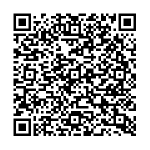 As part of the Trauma Informed Education podcast, Dr. Ayre and Dr. Krishnamoorthy review the chapters of Ms. De Thierry’s book, Teaching the Child on the Trauma Continuum. Listen in to the eight-part podcast mini-series to learn more about the trauma continuum [18:34].
As part of the Trauma Informed Education podcast, Dr. Ayre and Dr. Krishnamoorthy review the chapters of Ms. De Thierry’s book, Teaching the Child on the Trauma Continuum. Listen in to the eight-part podcast mini-series to learn more about the trauma continuum [18:34].
Click or scan the QR code to start listening.
Impact of Trauma in the Classroom
Dr. Ayre: Can you highlight how trauma affects the brain and body of children, and what this looks, sounds and feels like for a classroom teacher?
Ms. de Thierry: We recognise that trauma primarily impacts the body and the mind. Many classroom teachers would ask me, “can you just tell me what these children’s triggers are”? “What are the things that will cause them to react in a way that’s inappropriate or problematic”? I generally laugh and say, “do you know what your triggers are?”
I often tell people a story to help explain the difficulty in identifying ‘triggers’ in others. The story is of a little boy who went for a walk with his dog and ended up having his foot run over by a car. At the same time, he was carrying a banana milkshake that spilled everywhere. After the car ran over his foot, he ended up in the hospital, and it was all very traumatic for him. Many months later, the little boy was happily chatting in the lunchroom at school when somebody spilled a banana milkshake. His reaction was to run, just to run as fast as he could, while he also screamed and yelled as if the car was running over his foot again. The little boy is ten, and this embarrassed him. I explained that there was no cognitive sense for this little boy of when his foot was run over by the car. The trauma of the car running over his foot while drinking a banana milkshake will be entangled in his head. That means whenever he sees a spilled banana milkshake, he might get frightened as the trauma of his foot being run over will be activated.
That’s an example of ‘what wires together, fires together’. But for those teachers or this little boy, there was no cognitive understanding of this. Essentially, when this boy’s foot was run over, the sensory neurones all fired off in his head simultaneously. The smell and sight of spilled banana milkshake, the sound of the car, the feeling of terror, the feeling of pain in his foot, the scent of the dog, all those senses and neurons would have fired off in his head at the same time. That’s how they ‘wired together’, meaning they tangled together in the subconscious. The little boy could have equally screamed and yelled and had a trauma response if he’d seen a dog at the same time as having a headache because the sense of pain and sight and smell of the dog might have triggered a similar response, like a flashback of what happened to him when his foot was run over. The smell of banana milkshake was a sensory memory held in his subconscious, which remembered the accident, which then caused him to have a physiological response of pain, which we would call a flashback.
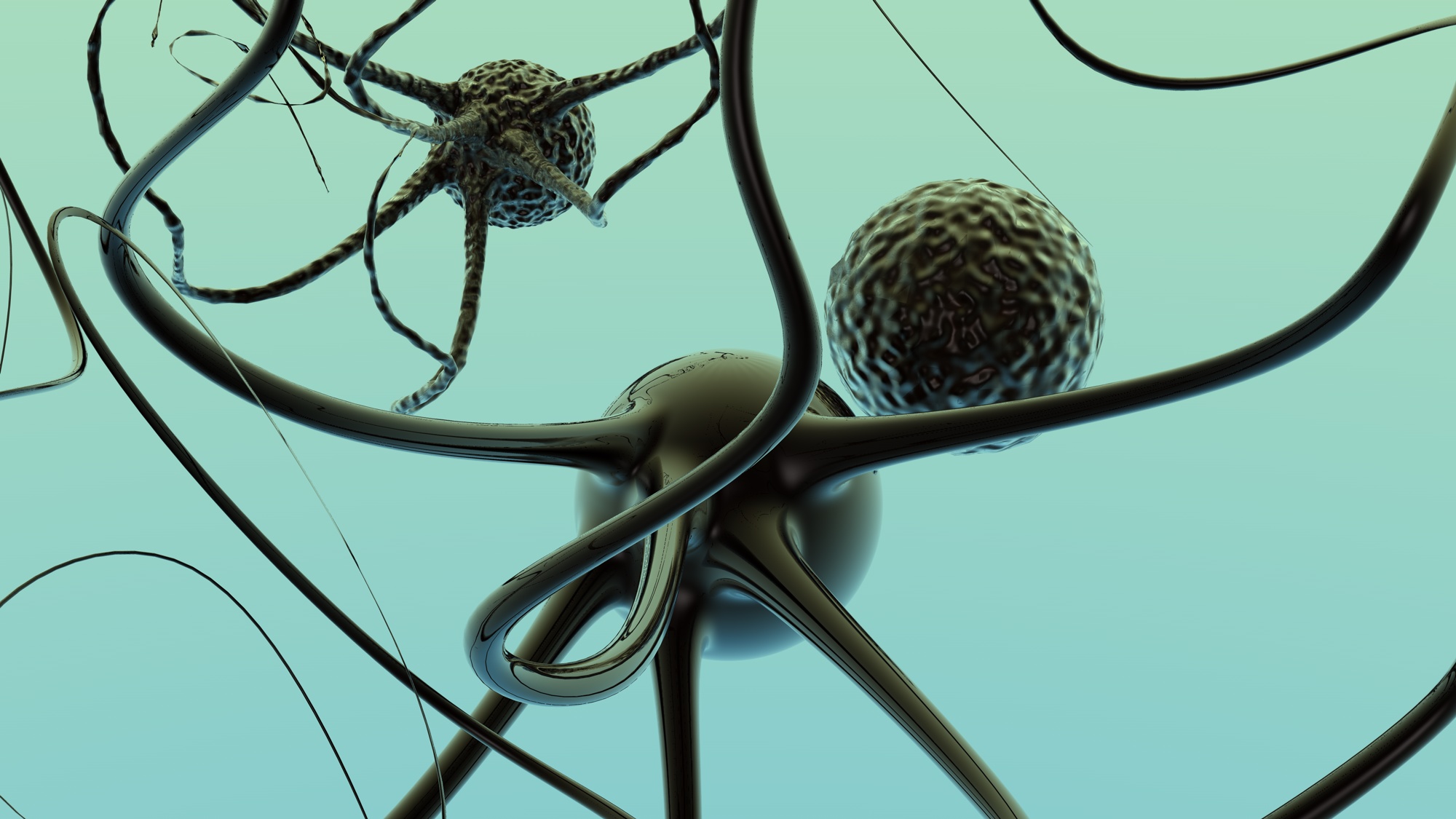
![]() The Science of Learning: Neurons that Fire Together Wire Together
The Science of Learning: Neurons that Fire Together Wire Together
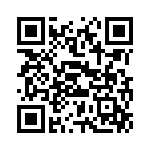 Teaching to the brain’s strengths is easier once you understand how the human brain acquires, retains, and retrieves information. This video from the State University of New York (SUNY) is a primer on the fundamentals of the neuroscience of learning [59:58]. You will learn the basics of how the human brain changes as we develop and as we learn new skills and concepts.
Teaching to the brain’s strengths is easier once you understand how the human brain acquires, retains, and retrieves information. This video from the State University of New York (SUNY) is a primer on the fundamentals of the neuroscience of learning [59:58]. You will learn the basics of how the human brain changes as we develop and as we learn new skills and concepts.
Click or scan the QR code to start listening.
Dr. Ayre: That makes it tricky for the teacher to identify the specific trigger. There’s no logical sense to what’s happening in front of them to try and help the child.
Ms. de Thierry: They are challenging for the teachers and tough for the kids. The kids don’t know what’s just happened and are freaked out themselves. They don’t understand why they did what they did. Unless we teach children about the subconscious and how it works, they can feel terrified by themselves and their responses. The response from an adult at that point, whatever background the adult has, must be empathetic, kind, curious, and not furious. They need to be thoughtful, proceed with caution and reaffirm that what’s just happened is okay. Let the child know you’re not mad, and perhaps they’ve just had a response that related to their experience of trauma.
The first question teachers generally ask is, “why did you do that”? What the child is doing is looking to the adult and asking, “Why did I do this”? The problem is professionals will often question why their behaviour is escalating. If a child is screaming or having a temper tantrum publicly, running out and hiding under a table, or maybe hitting somebody or being aggressive, and afterwards thinks, “why did I do that”? And there’s no adult to tell this child why they did it, and there’s no one to explain that it’s a response to fear. You might be so frightened that your behaviour will escalate because you feel so powerless and terrified. So, adults must be kind, empathic and curious about the behaviour to help the child feel safe.
Dissociation in Children
Dr. Ayre: One response to trauma is often dissociation. What are some of the behaviours or signs that are indicative of dissociation in children with trauma?
Ms. de Thierry: Many professionals here in the UK would refer to dissociation as glazing over and daydreaming. Some forms of dissociation are a normal adaptive behaviour, and it’s something we all do when we’re driving or watching a film or something. Dissociation is also a way of coping with unrelenting traumatic experiences. It’s a form of shutting down and fragmenting. It’s a internal system – a complex internal response to terror and powerlessness.
Essentially, it leads to confusion and chaos internally. In children under eight years old, this could present as occasionally glazing over or daydreaming. Dissociation presents differently at different times. For example, you could have an eight-year-old who is a maths-loving, typical little eight-year-old in one moment. The next moment, for no apparent reason (because we understand that triggers aren’t logical), that same eight-year-old may be rocking in the corner, sucking her thumb like a baby and wetting herself. She may be very verbally articulate, wise, or mature for her age. Then the next minute says, “I’ve no idea what you’re talking about. I’ve never wet myself, I’ve never been like a baby”. That’s the different presentations and ways of presenting her different parts or her different ego states.

I often talk to children about buckets. You have a muddy bucket and a shiny golden bucket. In the shiny bucket, you put all the happy things, the lovely moments, the stickers, the rewards, the friend saying, “I want to choose you.” Then, in the muddy bucket, you put in all the stuff that’s hard to deal with, the tough stuff, the things you feel pained by and you stick those in your muddy bucket. And if your muddy bucket is full, it begins to overflow. This overflow behaviour is being grumpy, irritable, a little bit
spiky, sharp, or maybe aggressive.
When children have been significantly traumatised, they have one muddy bucket that gets too full and then leaks. The leaks are the behaviours that begin to cause the child
to have less love, less nurture, and less kindness and empathy from others. Then they must use another bucket, and then another bucket, and another bucket, and each bucket holds different memories, experiences, feelings, and different ways of being.
I also use another metaphor, the daisy theory. I would say that each bucket is like a daisy petal. It’s a different holding bay for emotions, memories, and experiences. We usually start with talking about the buckets. Then when somebody does begin to show tangible evidence that they’re highly dissociative, we then do what I call the daisy with them. We’ve got hundreds of children around the country that we’re doing the daisy with. We draw a Daisy, and the middle circle we will say is their apparently normal part[1] (ANP), which comes from the structural dissociation theory[2] of van der Hart, Nijenhuis and Steele[3], that’s their normal presenting part, the part that gets on with life. Then we will map out all their petals. They’ll begin to acknowledge that maybe they’ve got a baby petal (or part of themself) that sometimes, like the story I just told you, wets themselves and sucks their thumb for no reason. And maybe they’ve got an older petal (or part). A maths-loving petal, and maybe they’ve even got an aggressive petal, and perhaps a petal that is sad and possibly suicidal and desperate. Those kids will be aware of those parts somewhere in the middle of the dissociative continuum.
When they get to the other end, the furthest end of the continuum, they won’t be aware of those parts because they’ll have a form of amnesia or memory loss. They’ll not be aware that those parts exist. That’s when kids are often told that they’re lying, “Did you do that behaviour”? and the child will say “No” because they can’t remember it. After all, it’s a different part of them, and then they’re told they’re lying when they honestly can’t remember.
An eleven-year-old boy was here a few years ago, and he was sexually abused from birth. He ended up showing some sexualised behaviour. Quite often in the classroom, he would suddenly put her hand up the teacher’s skirt. This would generally make him feel terrified that he did it because it would shock him, and he’d end up having a big meltdown and losing the plot. By the time he managed to recover from the meltdown, and sadly they would often have to restrain him and do all sorts of unpleasant things, he’d be dragged to the head teacher’s office. At the office, the head teacher would ask, “why did you put your hand up the teacher’s skirt”? “Why did you do that?” And the child would stand there and say, “I have no idea what you’re talking about. I didn’t do that”. And to an extent, he didn’t do it. Another part of him did it. When this little boy understood what was happening to him, he had the language to explain to the adults around him that he took full responsibility for his behaviours. It’s not a way to avoid that, but it’s another part of him that has different responses and ways of responding to triggers, pain, and fear.
![]() Trauma and the Nervous System
Trauma and the Nervous System
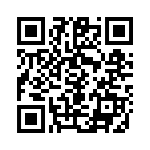 This video from the Trauma Foundation gives a basic introduction and overview of how trauma and chronic stress affect our nervous system and impact our health and well-being. The
This video from the Trauma Foundation gives a basic introduction and overview of how trauma and chronic stress affect our nervous system and impact our health and well-being. The
content is based on the groundbreaking work of Stephen Porges and his Polyvagal Theory and is inspired and informed by the work of thought leaders Deb Dana, Vincent Felitti, Robert Anda, Gabor Mate, Dan Siegel and Peter Levine.
Click or scan the QR code to watch the video.
Dr. Ayre: Children need to be able to name their feelings and understand them. We keep handing out punitive consequences, and they do not work, and it is not fair for these children.
Ms. de Thierry: Punitive consequences cause more shame in children, which causes an escalation in Punitive consequences cause more shame. in children behaviour resulting in children being even more socially withdrawn and isolated, which causes more trauma. The daisy theory is a way of helping children that feel very overwhelmed by their behaviours, emotions, and responses to contain them in a way that feels normal and safe.

Attunement
Dr. Ayre: What key strategies can you suggest for teachers who support trauma-affected students?
Ms. de Thierry: The key is being attuned[4]. As a trainer, I have to attune to the people I’m training. I have to notice when they start to look tired and need a break. Or when I haven’t let them talk enough to digestwhat they’re learning. I have to notice if it’s near lunchtime and they’re hungry. I have to notice when maybe they’ve taken up too much information, and they need to get into groups and go outside and chat. As a trainer, that’s what keeps them listening, and if I’m not attuned to them, I’ll have half of them asleep in the room and not listening. Being attuned as a trainer is vital as I can be responsive in the room. I would argue that that’s precisely the same as being a teacher.
When you attune, you’re aware when one child in the corner is just staring out the window. You’re attuned that there’s a little gaggle of girls being nasty to each other. If you’re aware, even with 30 plus students, you know what’s happening, and you pick up the vibe in the room. I think as an attuned teacher, you can respond to that. You can go “let’s all jump up and do our spaghetti wiggle. We can do regular brain gym exercises, physical exercises that cause the endorphins to run again and break the tension, boredom, hard work, or whatever is going on to let you change the atmosphere”. When you can attune to the needs of your students, you’ve got a happy class, so I would argue that attunement is the most essential skill to develop. Many schools say, “give me the strategies,” and I’ll be like, “not until you understand attunement”. Strategies on their own won’t be successful if you’re not attuned to your students. Many of the strategies only work in attuned relationships.
![]() Attunement in the Classroom
Attunement in the Classroom
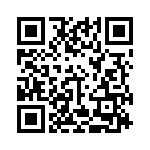 Attunement helps children to feel safe with us and is the building block of secure attachment. Discipline tools should be used with attunement. From this perspective, non-violent discipline methods are not good or bad in themselves, rather, they should be evaluated according to how well they fit with the needs and signals of the child.
Attunement helps children to feel safe with us and is the building block of secure attachment. Discipline tools should be used with attunement. From this perspective, non-violent discipline methods are not good or bad in themselves, rather, they should be evaluated according to how well they fit with the needs and signals of the child.
Check out this video from Peace Discipline that discusses the concept further [13:48].
Click or scan the QR code to start watching.
Challenges for Students at School Impacted by Trauma
Dr. Ayre: What have you noticed is the biggest challenge for students experiencing traumatic stress at school?
Ms. de Thierry: The biggest challenge is that children are dependent on peer relationships and a relationship with a trusted adult. Yet very often, their behaviours are the very thing that pushes them away from having a relationship. The frustration and conflict of knowing deep inside that they’re desperate for friends and to please their teacher. They’re desperate to have that sense of satisfaction that the teacher is pleased with them. They also know they’re doing the behaviour that pushes children away so they won’t be invited to birthday parties. They are frustrated with their teachers and think their teachers just don’t like them. We know that relationships are the key to healing from trauma, the key to recovery. Yet, they’re the very thing that children We know that relationships are the key to healing from trauma, the key to recovery. struggle with most.
Dyslexia wasn’t understood well when I was training as a teacher. We weren’t really trained on it and didn’t understand it at the time. I used to think it meant those students with dyslexia weren’t intelligent. There was no notion then that you could have highly intelligent people like Einstein, who also had dyslexia. Now we know that if we help children with dyslexia, we can see them become like Einstein, we can see them become some of our creative geniuses. We need to give them extra support in one area to allow them to excel. I would love trauma to become the same, for it to be obvious
and for teachers to acknowledge and use the trauma continuum to see where the kids sit on it to know what intervention might be appropriate. Let’s then provide that intervention now.
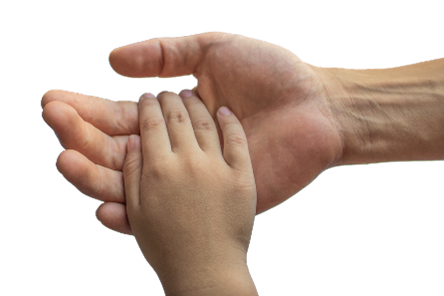
If we can work out how to appropriately intervene when a child has been traumatised and help them recover, we will change communities. We will transform families and we will reduce the pressure on the mental health system. We will change the pressure on the criminal justice system. We will literally change the world if we can crack the question of ‘how to help a child recover from trauma.’ We know that one-on-one support and early intervention when the kids are seven or eight will cost us financially for a couple of years. Still, we know long term it will save money. It will save money in terms of their ability to contribute positively to society as they grow into adults, which will likely reduce anti-social behaviour due to unhealed trauma. This will then minimise the use of, and impact on, our mental health and criminal justice systems. This is money worth spending on early intervention while students are at school. I think if we can crack that, then I’ll be happy!
Therapeutic Mentoring Rooms
Ms. de Thierry: The Therapeutic Mentoring Rooms concept came from having run the Trauma Recovery Centre charity in the United Kingdom. There we would see about one hundred children who were coming in for therapy or intensive education in one of our centres each week. I realised that some of the children coming for treatment each week were being sent in taxis that our local government paid for. It seemed very un-trauma informed to me that these little vulnerable kids were being put in taxis with unknown taxi drivers, sometimes driving an hour to our centre for an hour of play therapy. Whilst it’s brilliant therapy, and the kids benefitted from it, I found it very disturbing that they were in a taxi for two hours, often with an adult they didn’t know.
To make the whole process trauma-informed, I thought, ‘why don’t I train people in the school to be trauma-informed and deliver therapeutic support to these kids?’ I developed a 14-day course called the Therapeutic Mentoring Certificate. To support the implementation of these practices, we started therapeutic mentoring rooms. In some mainstream schools, it’s a physical room set up like our therapy rooms with giant colourful beanbags and sensory kits. They don’t look like classrooms at all. The therapeutic mentors who have completed the 14-day certificate work with the children there in a different way from us as therapists. We have trauma-informed therapists who go into the school six times a year and, after completing comprehensive assessments, will devise treatment plans for the most traumatised children that the therapeutic mentor will then implement. We also offer the therapeutic mentors’ clinical supervision’ – a chance to debrief and learn from their experiences that week. This occurred every six weeks to support them in implementing the support plans.
One example is a little eight-year-old boy who came for therapy one hour a week. This cost the local government hundreds of pounds a week. So instead of continuing this, we got the child to have breakfast with the therapeutic mentor each day for an hour. At breakfast, the mentors and children could just play – with playdoh for example – and chat about how he’s doing. In that hour, the therapeutic mentor would also implement activities that a therapist had written in his treatment plan.
If there were any problems or anything complicated arose, then the therapeutic mentor could talk to us as we were providing ongoing support. We see fantastic outcomes this way. Children that were going to be excluded are no longer excluded. Children are building on the relationship they’ve already got with a member of staff within the school, and they don’t have to travel out for therapy to learn how to build relationships as it’s happening right there as part of their education.
Chapter Summary
- The trauma continuum looks at three areas of a child’s life, their trauma symptoms, trauma experience and their environment. The trauma continuum can help to identify and match appropriate interventions to each child’s need.
- Triggers in children at school can be difficult to identify by teachers and the children themselves. A teacher’s response to a trigger and a trauma behaviour needs to be empathetic, kind, gentle and curious.
- Children can suffer memory loss and amnesia as a form of dissociation in response to trauma and may not remember certain behaviours enacted when triggered.
- Attunement is a key skill for teachers to develop to manage various children’s needs in a classroom.
![]() Book Recommendations
Book Recommendations
- de Thierry, B. (2015). Teaching the Child on the Trauma Continuum. Grosvenor House Publishing Limited.
- de Thierry, B. (2016). The Simple Guide to Child Trauma: What It Is and How to Help. Jessica Kingsley Publishers.
- de Thierry, B. (2017). The Simple Guide to Sensitive Boys: How to Nurture Children and Avoid Trauma. Jessica Kingsley Publishers.
- de Thierry, B. (2018). The Simple Guide to Shame in Children: What It Is, What Helps and How to Prevent Further Stress or Trauma. Jessica Kingsley Publishers.
- de Thierry, B. (2019). The Simple Guide to Attachment Difficulties in Children: What They Are and How to Help. Jessica Kingsley Publishers.
- de Thierry, B. (2020). The Simple Guide to Complex Trauma and Dissociation: What It Is and How to Help. Jessica Kingsley Publishers.
- de Thierry, B. (2021). The Simple Guide to Collective Trauma. Jessica Kingsley Publishers.
![]() Listen to the full interview on the Trauma Informed Behaviour Podcast
Listen to the full interview on the Trauma Informed Behaviour Podcast
References
Ayre, K. (Host). (2017). Therapeutic Classroom management with Betsy De Thierry (Podcast Episode 13) [Audio Podcast]. In Trauma Informed Education. Sound cloud. https://soundcloud.com/trauma-informed-education/ 13-therapeutic-classroom-management-with-betsy-de-thierry?in=trauma-informed education/sets/expertinterviews&si=6616e4c177f34181a1d7b06faf45aa93&utm_source=clipboard&utm_medium=text&utm_campaign=social_sharing
Ayre, K., & Krishnamoorthy, G. (Hosts). (2017). TIPBS Bookclub – Teaching the child on the trauma continuum [Audio Podcast]. In Trauma Informed Education. Sound cloud. https://soundcloud.com/trauma-informededucation/sets/tipbsbookclub si=9213ed98cd8948d8a3338609162e9c59&utm_source=clipboard&utm_medium=text&utm_cam paign=social_sharing
Peace Discipline. (2021). Attunement. [Video]. YouTube. https://www.youtube.com/watch?v=ZdIQRxwT1I0
SUNY CPD Videos. (2021, August). The science of learning Pt1: Neurons that fire together wire together. [Video]. YouTube. https://www.youtube.com/watch?v=eSFkMWXKKfg
The Trauma Foundation. (2021). Trauma and the nervous system: A polyvagal perspective. [Video]. YouTube.
https://www.youtube.com/watch?v=ZdIQRxwT1I0
- The rational, grounded and present-oriented parts of an individual. ↵
- Posits personality is integrated over time and this integration can be disrupted by childhood trauma. ↵
- The haunted self: Structural dissociation and the treatment of chronic traumatisation (2006). ↵
- Aware of, attentive or responsive to others. ↵

